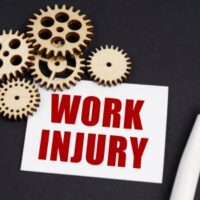Gender and Workplace Injuries

Is gender a predictive factor in workplace accidents? According to data from the US Bureau of Labor Statistics and the National Safety Council (NSC), both men and women experience serious and fatal workplace injuries, yet the types of injuries and rates at which they experience them do vary. While the statistical distinctions may have to do with the types of jobs and the industries in which men and women tend to work rather than any inherent differences, there are striking differences to note in the data. Most significantly, male employees suffer fatal occupational injuries at a significantly higher rate than female employees, and this fact has been true for the last decade and longer.
Fatal Occupational Injuries and the Gender Breakdown
Year after year, data shows that men are killed much more frequently on the job than women are. Indeed, as the NSC points out, since 2011, male employees have accounted for anywhere between 91.4 percent and 93 percent of all fatal occupational injuries in a given year. While there are slightly more men who are employed than women, the difference in that regard is not nearly enough to account for the differences in rates of workplace fatalities.
The ways in which fatal injuries occur in workplaces also impact men and women differently. Data from the BLS shows that men are killed much more often in workplace-related roadway incidents, contact incidents (such as struck-by accidents), as well as in slips and falls. When women sustain fatal injuries at work, they are more commonly affected by exposure to harmful substances and homicides than men (although women also experience workplace injuries and fatalities due to traffic collisions and slips and falls).
Types of Nonfatal Work Injuries for Male and Female Employees
In general, the NSC data shows that male and female employees sustain approximately the same rate of nonfatal injuries that require days away from work, but the industries in which they sustain these injuries tend to differ. For male workers, about 30 percent of nonfatal injuries requiring days away from work occur in manufacturing and production industries, with about 70 percent in service industries. For female employees, more than 90 percent of workplace injuries requiring days away from work occurred in service injuries.
Data from the NSC also shows that the parts of the body injured can also vary. Male employees tend to experience more upper extremity injuries than female employees, and female employees tend to experience more body systems harm than male employees.
Contact a Maryland Workers’ Compensation Attorney
Workplace injuries can affect employees regardless of gender, but it is still important to understand how data shows that men and women may experience workplace injuries at different rates. If you were injured on the job, it will be critical to seek advice from an experienced Maryland workers’ compensation attorney at the Law Offices of Steinhardt, Siskind and Lieberman, LLC about your eligibility for workers’ compensation benefits in Maryland. A worker’s compensation lawyer at our firm can discuss the details of your work injury with you to help you determine whether your injury is likely to be considered arising out of and occurring in the course of employment such that it is compensable. Contact us today for assistance.
Sources:
bls.gov/charts/census-of-fatal-occupational-injuries/distribution-fatal-events-by-gender.htm
injuryfacts.nsc.org/work/industry-incidence-rates/worker-injuries-and-illnesses-by-gender/
bls.gov/opub/btn/archive/women-experience-fewer-job-related-injuries-and-deaths-than-men.pdf


